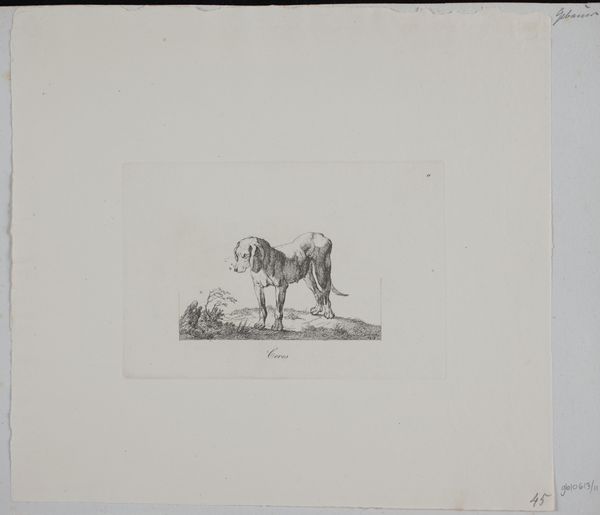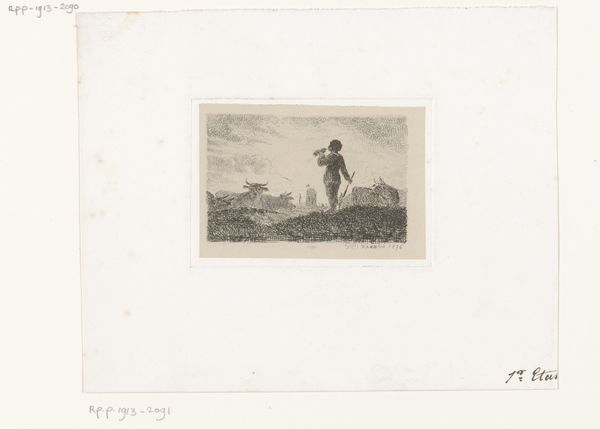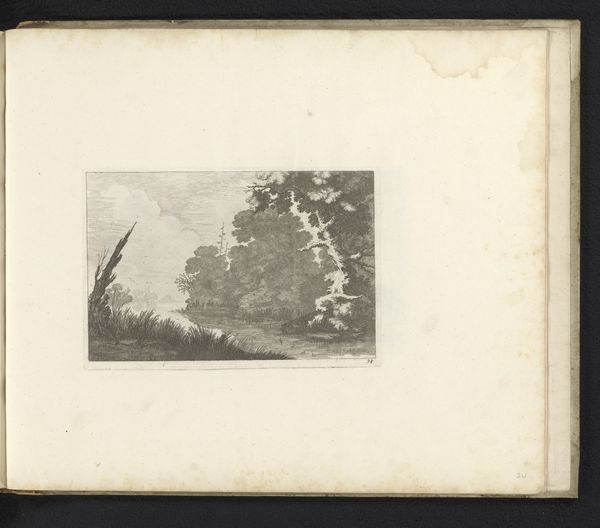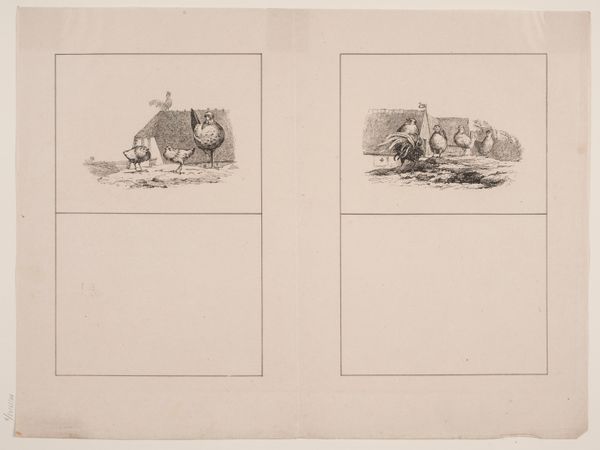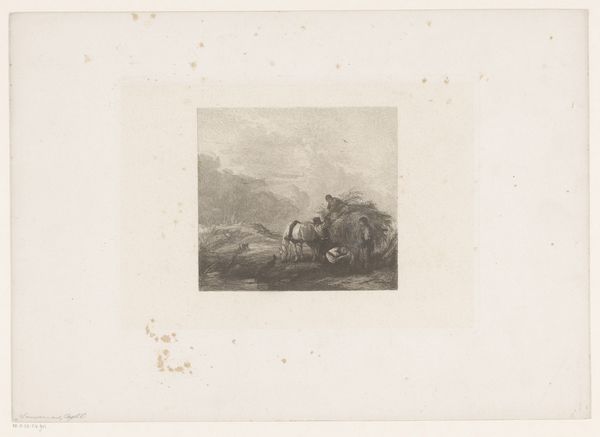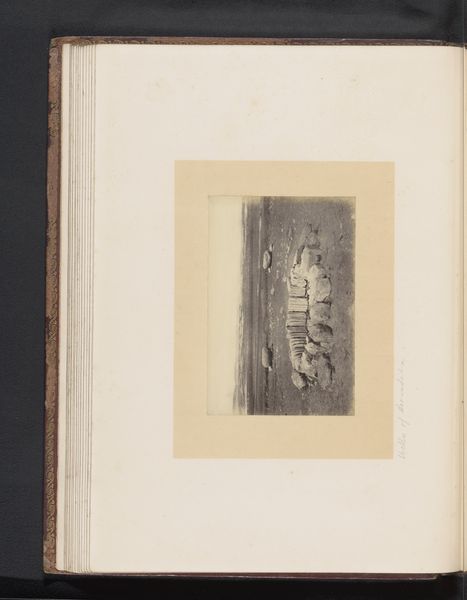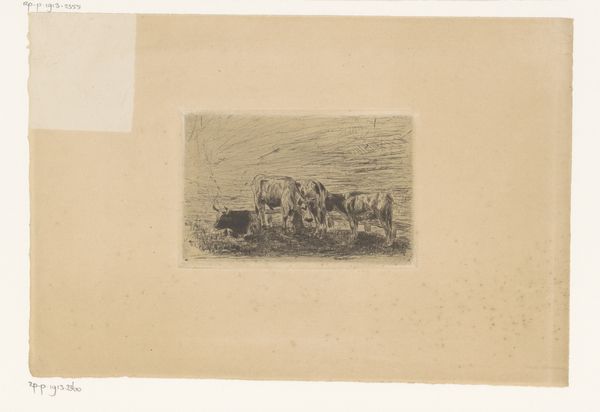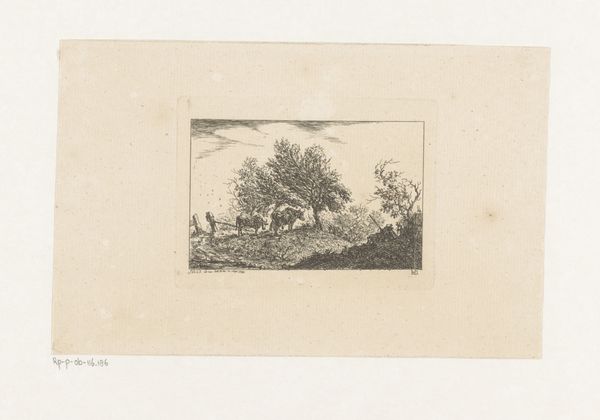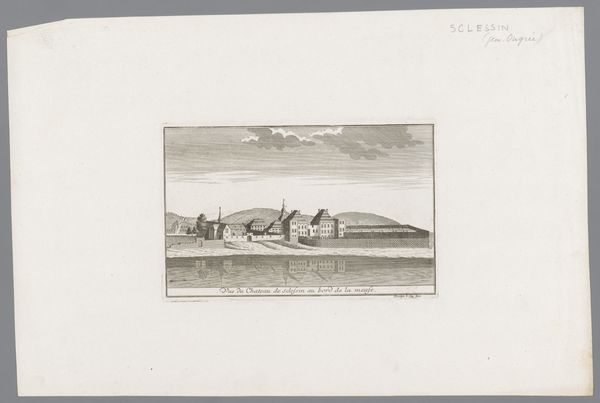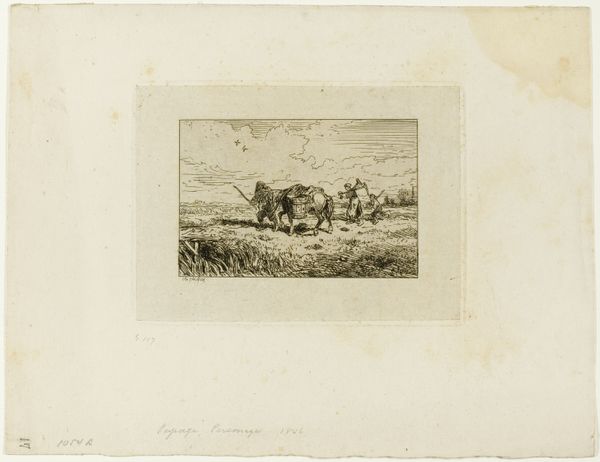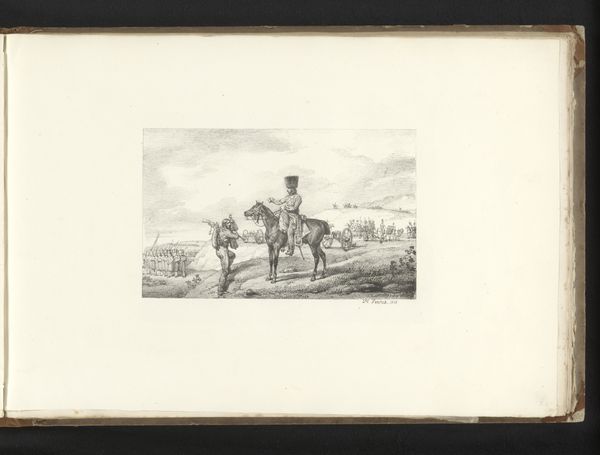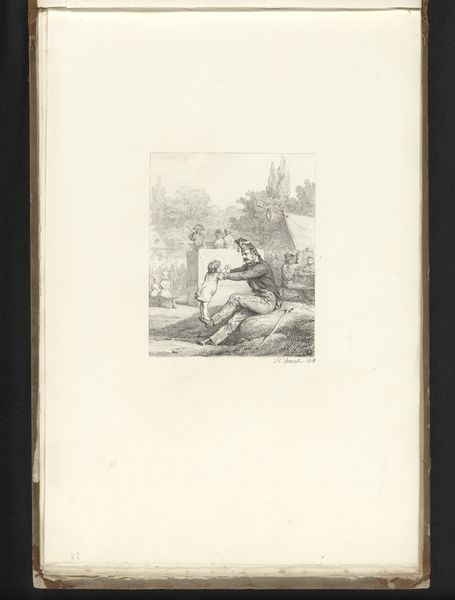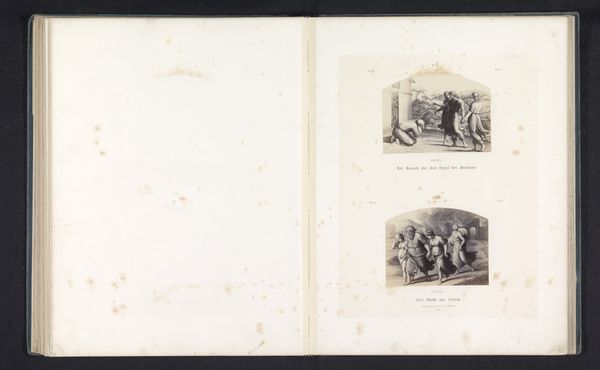
drawing, ink, pencil
#
drawing
#
narrative-art
#
animal
#
landscape
#
figuration
#
ink
#
romanticism
#
pen-ink sketch
#
pencil
#
genre-painting
Dimensions: height 301 mm, width 437 mm
Copyright: Rijks Museum: Open Domain
Curator: Let’s consider this drawing, “Hunting Dog near a Young Bird,” crafted in 1818 by Horace Vernet. It's housed here at the Rijksmuseum. The artist worked with pencil and ink, focusing on figuration, animals and landscape to weave together a compelling narrative scene. Editor: It immediately evokes a sense of anticipation. The tension between the hunting dog and the vulnerable bird is palpable, isn’t it? The pose of the dog is almost theatrical. Curator: Absolutely. Vernet’s romantic leanings emphasize feeling, doesn’t it? The dog’s predatory nature is balanced by the delicate beauty of the young bird. This era glorified the complex dance between humanity, nature and animals. How does this speak to our relationship to the environment today? Is the relationship between power and vulnerability ever equal? Editor: Hunting scenes carry heavy symbolic baggage, you know. Throughout history, the dog has symbolized loyalty and obedience, here possibly used in the service of power. A hunting dog evokes notions of domesticity alongside an innate wildness. The bird represents freedom but also fragility. It underscores human impact on natural ecosystems and perhaps even an allegorical link to social hierarchies. The cultural symbolism gives pause about contemporary ecological concerns. Curator: It's impossible to view art like this outside the urgent issues of the moment. The act of hunting shifts into the question of whether it's a symbol of control or a violation. There is so much loaded in this drawing to address topics that feel pertinent in contemporary conversations about sustainability. Editor: Right, what's fascinating is how Vernet plays with that dichotomy – portraying a very specific power dynamic within what seems to be a benign scene. The viewer gets confronted with the deeper psychological, even primal elements that connect us to animals and the earth. The artwork stands the test of time because those elements endure. Curator: It does push one to reconsider humanity's multifaceted connections to the animal kingdom, which remain essential. Editor: I find this piece sparks a range of profound observations.
Comments
No comments
Be the first to comment and join the conversation on the ultimate creative platform.
